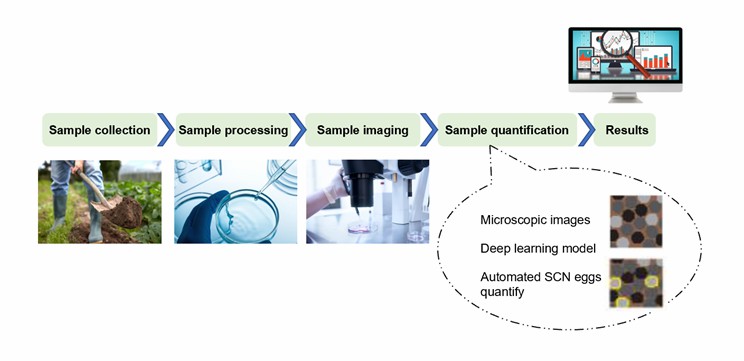Detection of Plant Nematodes by Image Analyses
Accurate species identification is the foundation for all elements of taxonomic research and is an important part of biological research workflows. Advances in deep learning and autofluorescence have opened new avenues for nematode identification and quantification based on image analysis. The technique is particularly suitable for handling large samples and detecting rare and microscopic objects, such as threadworm eggs in complex backgrounds.
Lifeasible provides services to customers worldwide covering the detection of plant nematodes by image analyses, including deep learning approach and autofluorescence. Our experts will answer your questions comprehensively and carefully and help you solve the problems in the studies. We guarantee satisfied and reliable results for our customers all over the world.
Detection of Plant Nematodes with Deep Learning Approach
- Deep learning breakthroughs also referred to as machine learning or artificial intelligence (AI), have paved the way for image-based nematode identification and quantitation.
 Fig.1 Overview showing the workflow of the automated quantification process for plant nematodes.
Fig.1 Overview showing the workflow of the automated quantification process for plant nematodes.
- Deep learning approach can play an important role in detecting, quantifying, and classifying plant nematodes. Therefore, it will help to address some of the limitations associated with traditional morphology-based classification, including the reduced number of taxonomists, subjective decision-making, and provide fast and accurate identification.
- Lifeasible provides a deep learning approach to detect plant nematodes, containing their eggs and cysts, which automatically detects phenotypes with multiple stages. First, a large number of images of plant nematodes are taken and independently annotated by a team of experts to reduce subjectivity. These are then used to build an algorithm that learns the salient features of objects from images in a hierarchical hierarchy. The patterns of interest in the input images are then reconstructed using a network model with a supervised learning scheme.
Detection of Plant Nematodes with Autofluorescence
- A potential complement to conventional light microscopy is the use of the natural autofluorescence of microorganisms. Moreover, the emission and excitation spectra of the bacterial genera Lactobacillus and Saccharomyces vary.
- Lifeasible provides detection of plant nematodes with autofluorescence, which is a valuable technique for species identification. When the eggs of various plant nematodes are illuminated at various wavelengths, from white to infrared, they are fluorescent. The variation in the fluorescence lifetime value referred to as fluorescence intensity decay, also indicates that various species are considered.
Lifeasible offers the detection of plant nematodes based on image analyses with customized strategies and designs. Our advanced technical platforms help our clients solve the problems they may encounter in research based on decades of experience. If you are interested in our services or have any questions, please feel free to contact us or make an online inquiry.
For research or industrial raw materials, not for personal medical use!
 Fig.1 Overview showing the workflow of the automated quantification process for plant nematodes.
Fig.1 Overview showing the workflow of the automated quantification process for plant nematodes.